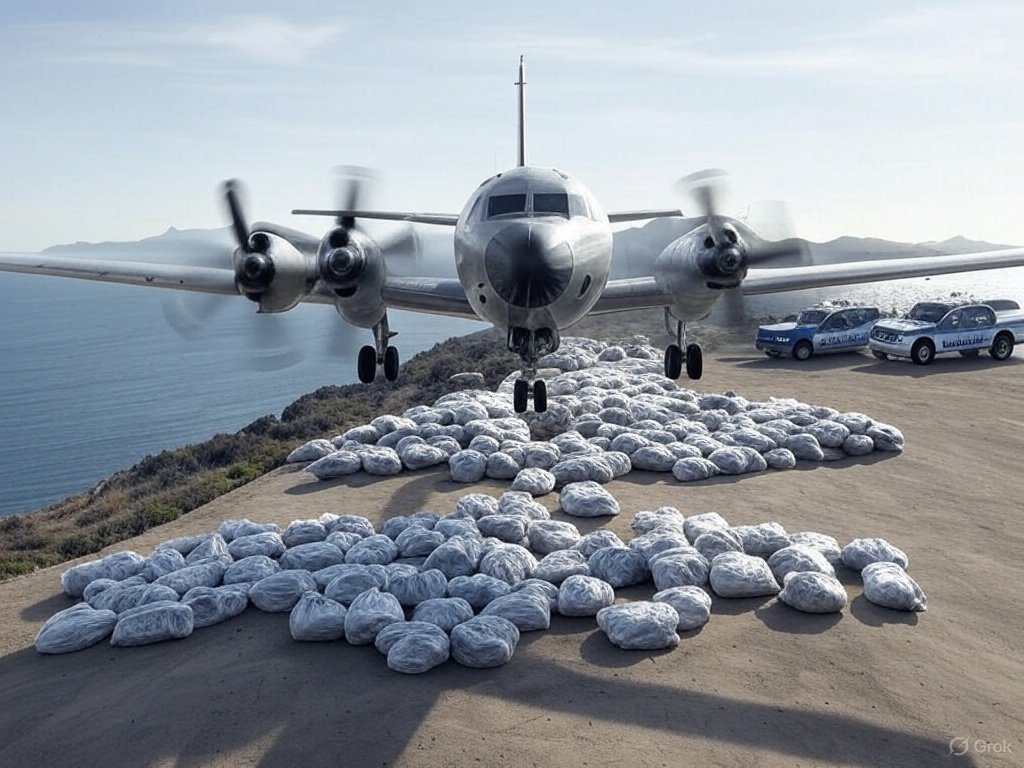Innovative Strategies in Aerial and Maritime Surveillance: The Role of U.S. Customs and Border Protection in Drug Interdiction
In the fight against drug trafficking and transnational crime, the U.S. Customs and Border Protection (CBP) plays a pivotal role through its Air and Marine Operations (AMO). With advanced detection technologies and a commitment to collaboration, AMO effectively disrupts smuggling attempts in the Eastern Pacific and beyond. A recent successful operation highlights the critical capabilities of AMO in safeguarding U.S. borders and preventing illicit narcotics from entering the country.
The Operation: A Case Study of Effective Interdiction
During a routine patrol, an AMO P-3 Long Range Tracker crew encountered a suspicious go-fast vessel, typically used for smuggling drugs due to its speed and agility. This detection triggered a series of coordinated responses that demonstrate the effectiveness of AMO’s operational strategies. The crew relayed vital information to the Joint Interagency Task Force-South (JIATF-S), ensuring that law enforcement agencies were prepared to act swiftly.
“The AMO aircrew provided real-time tracking and vectored an El Salvadorian law enforcement vessel to interdict,” illustrating the seamless integration of air and maritime operations. This real-time intelligence sharing is crucial for successful interdictions, as it allows authorities to respond quickly to emerging threats.
Response and Outcome: A Successful Interdiction
As the El Salvadorian law enforcement vessel approached the go-fast, the smugglers attempted to evade capture by jettisoning their contraband. However, the AMO P-3 aircrew maintained surveillance throughout the operation, demonstrating their commitment to ensuring that the illicit cargo did not escape. The crew later relocated the debris field and directed authorities to recover the discarded narcotics. Ultimately, El Salvadorian law enforcement successfully interdicted the go-fast, detaining three individuals and seizing approximately 3,300 pounds of cocaine.
The Role of AMO in Combating Transnational Criminal Organizations
AMO’s P-3 aircraft play a critical role in disrupting transnational criminal organizations by providing persistent aerial surveillance over vast maritime smuggling routes. The combination of high-tech equipment and skilled personnel allows AMO to monitor and track suspicious activities effectively. This strategic advantage is essential in a landscape where smugglers continuously adapt their tactics to evade law enforcement.
“AMO safeguards our Nation by anticipating and confronting security threats through our aviation and maritime law enforcement expertise, innovative capabilities, and partnerships at the border and beyond,” illustrating the proactive approach taken by the organization. This multi-faceted strategy not only includes aerial surveillance but also emphasizes collaboration with international law enforcement agencies, enhancing the effectiveness of operations.
Expanding the Mission: Geographic Reach and Operations
AMO conducts its mission in the air and maritime environments throughout the United States, Puerto Rico, and U.S. Virgin Islands. This geographic diversity allows AMO to address a wide range of security threats, from drug trafficking to human smuggling. The operational flexibility and adaptability of AMO are key factors in their ability to respond to emerging threats effectively.
In addition to its law enforcement operations, AMO also engages in community outreach and education efforts to raise awareness about the dangers of drug trafficking and its impact on communities. By fostering partnerships with local organizations and law enforcement agencies, AMO strengthens its mission and enhances its ability to safeguard the nation.
Innovative Technologies in Air and Marine Operations
Technological advancements play a significant role in the success of AMO’s operations. The P-3 Long Range Tracker aircraft, equipped with state-of-the-art surveillance technology, enables aircrews to monitor vast areas effectively. These aircraft are designed to operate in diverse environments, making them invaluable assets in the fight against drug trafficking.
Moreover, the integration of advanced radar systems, infrared imaging, and real-time data analysis enhances situational awareness for AMO personnel. This technology allows for rapid decision-making and coordinated responses, crucial in high-stakes interdiction scenarios.
Partnerships and Collaboration: A Key to Success
The success of AMO operations is not solely dependent on its technological capabilities; strong partnerships with other law enforcement agencies are equally important. By collaborating with local, state, and international agencies, AMO strengthens its operational capabilities and ensures a unified response to drug trafficking and other criminal activities.
Joint efforts, such as those with the Joint Interagency Task Force-South (JIATF-S), exemplify the effectiveness of inter-agency collaboration. These partnerships enable information sharing, resource allocation, and strategic planning, enhancing the overall impact of law enforcement efforts in combating transnational crime.
Conclusion: The Ongoing Fight Against Narcotics Smuggling
As the fight against drug trafficking continues, the role of U.S. Customs and Border Protection’s Air and Marine Operations remains crucial. Through innovative technologies, strategic partnerships, and a commitment to operational excellence, AMO effectively disrupts smuggling attempts and safeguards the nation’s borders. The recent successful interdiction of a go-fast vessel smuggling narcotics underscores the importance of vigilance and collaboration in addressing the ever-evolving threats posed by transnational criminal organizations.
For those interested in learning more about AMO and its mission to protect the United States from illicit activities, additional information can be found at www.cbp.gov. Stay connected with AMO’s latest updates by following them on social media platforms like Facebook, Instagram, and X.






